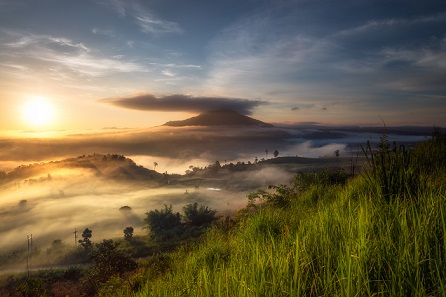Capturing the world’s carbon observation data

Related topics
Environment & climate action Innovation Austria Belgium France Germany Italy Netherlands United Kingdom Switzerland Environment Norway Cameroon Brazildate: 17/08/2015
Project: rational Global Carbon Observing System
acronym: http://www.geocarbon.net/
See also: CORDIS
GeoCarbon was a European project with a global reach, engaging with partners around the world to develop building blocks for a carbon observing system designed to span our planet. “It was an EU contribution to the construction of GEOSS, the Global Earth Observation System of Systems,” says Antonio Bombelli of the Euro-Mediterranean Center on Climate Change in Italy, who managed the project.
By the time GeoCarbon ended in December 2014, it had helped to lay the foundations of the future system. It notably provided an aggregated set of global carbon data along with upgraded mathematical software for the assimilation of this data. These and other modelling tools are used annually to document the previous year’s balance of carbon flows in the so-called “global carbon budget”, among other applications.
The project also strengthened ties with data contributors in the EU and beyond, developed specifications for the future system of systems, analysed socio-economic aspects of its implementation, and helped to set up an observing system for the Amazon to translate the theory into practice.
At the coalface
Faced with the reality of climate change, society needs better information about greenhouse gas emissions and the mechanisms involved in global warming. Detailed carbon data will also help researchers to learn more about the phenomenon and help policymakers to monitor the effectiveness and implementation of emission limits and offsetting schemes, Bombelli notes.
The proposed global carbon observing system would not only channel earth observation data, which is collected using methods as varied as manual measurement, airborne sensor readings and satellite imagery. It would also make it possible to visualise this data and inject it into the powerful mathematical models known as carbon cycle data assimilation systems — providing users with the bigger picture, as Bombelli explains.
GeoCarbon demonstrated the feasibility and the power of such an approach in a case study focusing on the Amazon. The partners helped to build an observing system for the entire region by combining data streams from various well-established local networks.
Sink or source?
The emphasis on the Amazon rainforest area was, of course, no coincidence. “This area is often described as the lung of the planet,” Bombelli explains. “It functions as a carbon sink, a reservoir that absorbs CO2.” A second case study focused on tropical Africa.
Half the excess CO2 from human activity is absorbed by such carbon sinks, which mitigates the impact of rising emissions, he explains. “But, in a changing climate, we don’t know how these sinks will evolve,” he adds. “Soaring temperatures, rising CO2 levels and changing rainfall patterns could affect them. The Amazon, for instance, might turn into a carbon source.”
If this were to happen, he adds, global warming could accelerate dramatically. Decisive action is needed, and the situation must be monitored closely. Given this imperative, is building a global observing system an expense or an investment? A GeoCarbon study has looked into this question, concluding that the system would free up far more resources than it would absorb.
Real data for a reality check
Earth observation infrastructure is rare in some parts of the world. Aggregated information about carbon flows and budgets therefore includes a lot of data derived by mathematical models, Bombelli notes. As part of its drive to reduce data uncertainty, GeoCarbon advocated a shift towards figures from actual observations wherever possible.
The project created momentum, adds Bombelli, which the partners hope to sustain by launching an internationally funded follow-on project. “We need to provide more and better information to policymakers,” he concludes. “Climate change does not wait for us, nor does it wait for policy decisions.”
